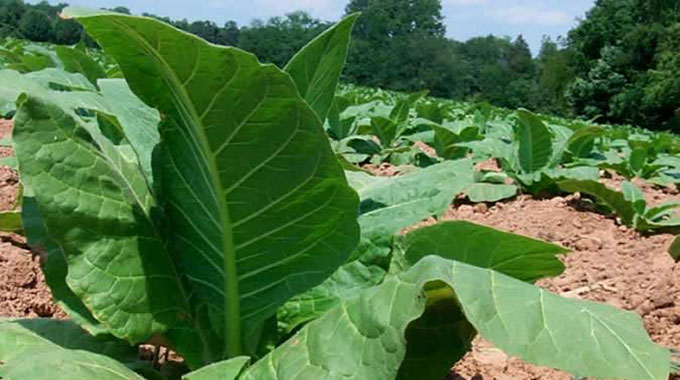
Local tobacco farmers continue to impress even when the chips are down.
The country, including the traditionally wet tobacco-growing Mashonaland West, Mashonaland Central, Mashonaland East and Manicaland provinces, received normal to below normal rainfall in the 2018/19 agricultural season. This adversely affected rain-fed tobacco, which constitutes the larger part of the crop grown locally. We therefore feared that output would fall. Our fears were confirmed by the Tobacco Industry and Marketing Board (TIMB).
The most authoritative voice in the local tobacco industry thought that the poor rains coupled with Tropical Cyclone Idai which hit parts of Manicaland and Mashonaland East in March, would knock production down. TIMB chief executive officer, Dr Andrew Matibiri, speaking soon after the cyclone, said while an assessment was underway at the time to establish the level of destruction of tobacco fields due to the weather phenomenon, there was going to be a significant decline in output.
Other reports projected that output would be between 220 and 240 million kilogrammes. The Zimbabwe Commercial Farmers’ Union said that the country was going to miss the 220 million kg forecast, a massive decline from the record 252 million kg harvested last year.
Notwithstanding the downbeat predictions, farmers performed very well, according to TIMB figures released on Wednesday. Output had by day 104 of the selling season on Monday, a whole week before the tobacco marketing season ends on Tuesday next week and two weeks before clean-up sales are conducted on September 10, surpassed last year’s record with 252,6 million kg having been sold.
How much more tobacco would have been produced this year if the country had received normal to above normal rainfall? How much more tobacco would have been produced if Tropical Cyclone Idai had not visited Mashonaland East and Manicaland where it destroyed tobacco fields and caused the collapse of some 550 curing barns? Production would most likely have been far higher than the 252,6 million kg that had been sold by Monday to set a loftier record.
Tobacco growers deserve praises for setting this production record; a record which is more notable given the odds that were stacked against them. It was not easy but they did it.
The performance is more evidence to prove that the growers are settling in, only 19 years after most of them started growing tobacco. They should continue working harder to produce more of the crop next year. The crop continues to have a positive impact on the social and economic wellbeing of growers. It earns them large sums of money which they use to educate and feed their families; to acquire and build various assets such as cars, houses and so on. It is a source of employment for the growers, their families and many more citizens in the value chain. On a larger scale, the economy earns much foreign currency from it, only second behind gold.
Therefore, the importance of tobacco to the country cannot be overemphasised.
While we are delighted that the inimical weather conditions in the immediate past growing season did not result in a slump in the harvest, we are concerned that the average price that farmers have been earning since the marketing season started in March was low.
According to the TIMB statement on Wednesday, the average price has been US$2,02 per kg. Yes, this is only an average price meaning that some growers were paid much more but it is indicative of the sums of money that went into farmers’ pockets this season despite the record output. Last year when output was lower, and after a season of normal to above normal rainfall, the average price was US$2,92 per kilogramme. The total amount of money farmers had earned by Monday this week was US$510 million. By the same trading day last year, growers had collectively pocketed US$731 million from the sale of 250,3 million kilogrammes of tobacco. In other words, farmers had by day 104 last year earned US$221 million more yet they had sold approximately 2,3 million less tobacco. This shows that this season has been less rewarding financially for farmers than last year despite the fact that they produced a bigger crop.
The reason behind this could be that the poor rainfall had a negative impact on the quality of the crop. This is regrettable but was inevitable. Although the revenue has been on the lower side this marketing season, it, in our opinion, is not so low as to dampen preparations for the next growing period in the next three or so months. Farmers should have set aside enough to buy seed, fertiliser and other inputs so that they can get back to the land. Also, the fact that more than three quarters of the tobacco produced in the country yearly is grown under contract means that even if farmers were paid comparatively less for their crop this year than last year, they will still be able to work their land in the forthcoming growing term as their financiers would continue to provide the support as usual.
